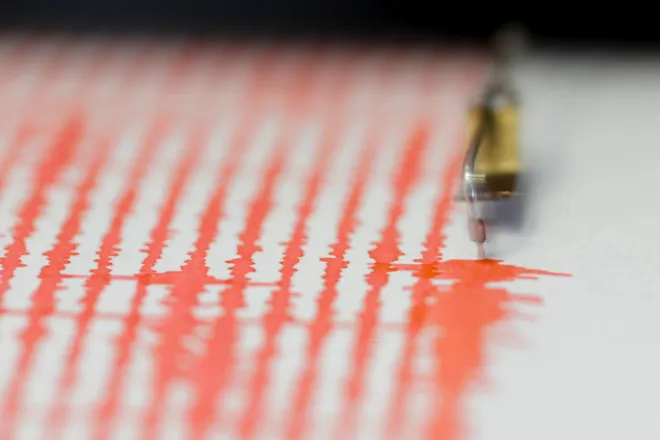Southern California rocked by series of earthquakes: Is a bigger one brewing?
An earthquake and dozens of aftershocks rattled Southern Californians starting on Tuesday night and continuing into Wednesday morning. Could a bigger one be on the way?
As a general rule, the risk is fairly low. About 5% to 10% of all California earthquakes are followed by a larger one within a week, and the probability of a larger quake depends on how much aftershock activity there is, according to the USGS. Lots of aftershock activity doesn't guarantee a bigger quake, however.
This latest quake certainly has aftershock activity. A magnitude 5.2 quake at 9:09 p.m. in Lamont, California, near Bakersfield was felt as far away as Los Angeles, over 100 miles from the epicenter. Since then, the U.S. Geological Survey has recorded dozens of aftershocks ranging from 2.5 to 4.5 in magnitude, none as large as the initial quake.
But experts say there's no real way to tell whether a large quake is going to be followed by something bigger – until after it happens.
"We have never found any characteristic that makes a quake more likely to be a foreshock," said seismologist Lucy Jones in a social media post.
There isn't a known fault in the area where the earthquake struck on Tuesday night, but it's still an area known for earthquakes, said Ole Kaven, U.S. Geological Survey research geophysicist.
As time goes on, the chances of a bigger quake go down, but the swarm of aftershocks does raise some eyebrows.
"Because of the productive nature of the aftershock sequence, the chance of another shock 5.0 or greater is a slightly higher," Kaven said. "It’s an interesting event in a place you don’t normally expect it, but it is certainly earthquake country so we need to be prepared for the possibility."

What is an aftershock? A foreshock?
When an earthquake is followed by one or more quakes smaller in size in the same area, the later quakes are called aftershocks.
But when an earthquake is followed by a larger one, the first quake becomes known as a foreshock.
One last term: The largest quake in a sequence is the mainshock.
Complicating matters: It's not fully possible to identity a mainshock until after the fact — you have to wait to see if a larger quake comes.

Have large foreshocks happened in California before?
About half of California's biggest earthquakes in history have been preceded by foreshocks. California's increased seismic activity compared to elsewhere in the U.S. makes it more likely for large quakes to occur in sequence, but the relative rarity of large earthquakes still makes it unlikely.
A sequence of small quakes that began rattling the morning of July 4, 2019, ended up being foreshocks to two of the state's largest earthquakes in two decades, according to scientists at Stanford. Later that morning, a 6.4 near Ridgecrest, California, prompted evacuations and caused fires to break out. The next day, a 7.1 earthquake struck the same area.
Research into one of California's largest earthquakes in history, the 1857 Fort Tejon quake that hit with a magnitude of about 7.9, shows that there were at least two widely felt foreshocks of between a 5 and 6 magnitude in the hours leading up to the mainshock.
San Francisco's catastrophic 1906 earthquake came roughly 20-25 seconds after a foreshock was felt throughout the city.
WHEN CAN YOU FEEL AN EARTHQUAKE?Quake magnitudes explained.
When will 'The Big One' hit?
The infamous but elusive possibility of a devastatingly large earthquake known as "The Big One" always comes to mind when a significant quake strikes in California.
But there's actually several devastating quakes that will eventually hit the state.
The USGS estimates that within the next three decades, there's about a 46% chance an earthquake of magnitude 7 will hit in the Los Angeles area, and a 51% chance it will happen in the Bay Area.
The chances of a 7.5 magnitude quake are 31% in the Los Angeles area and 20% in the San Francisco area in the next 30 years.
Read more.
Contributing: Beth Weise and Joel Shannon, USA TODAY
Disclaimer: The copyright of this article belongs to the original author. Reposting this article is solely for the purpose of information dissemination and does not constitute any investment advice. If there is any infringement, please contact us immediately. We will make corrections or deletions as necessary. Thank you.






